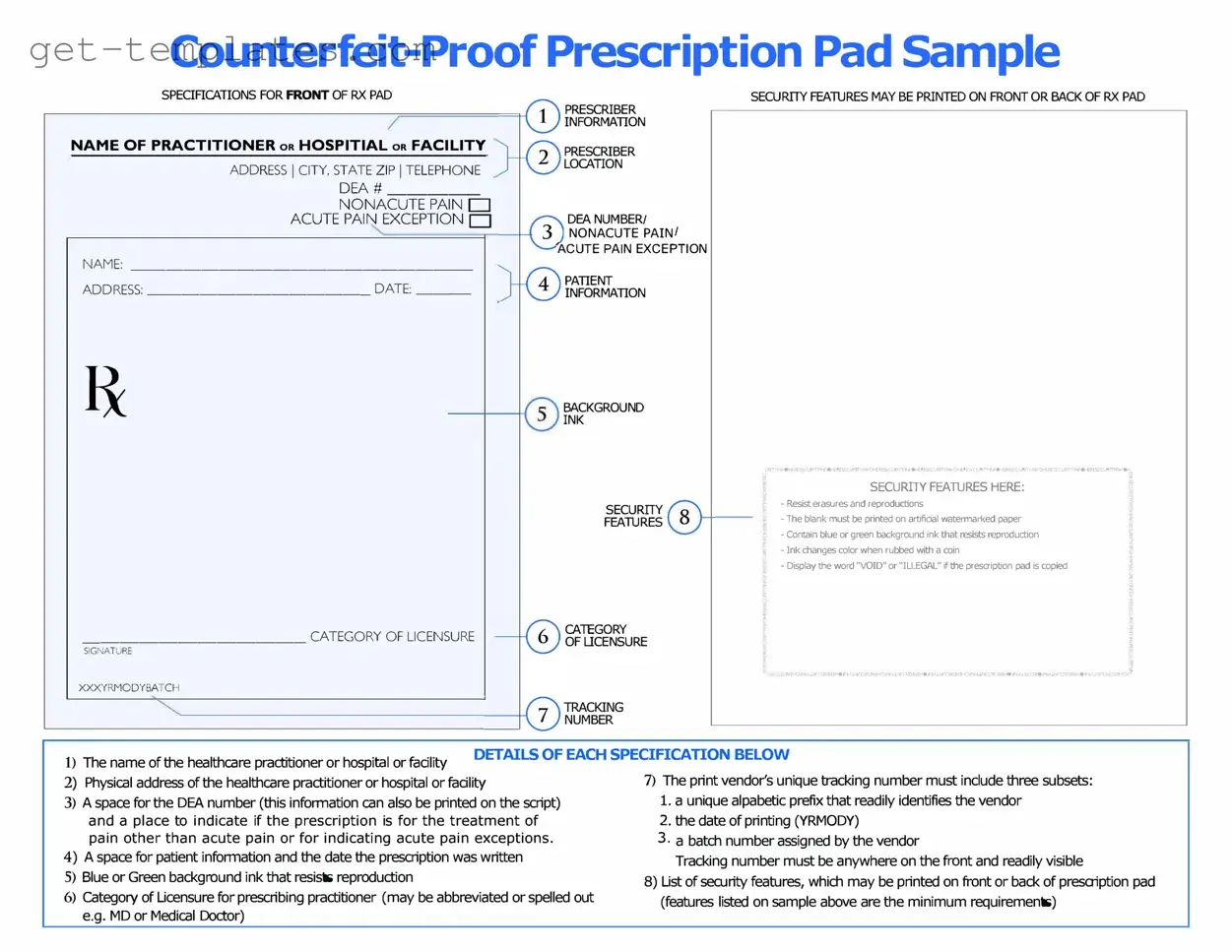The Prescription Pad form is an essential tool for healthcare providers, enabling them to prescribe medications safely and efficiently. This form typically includes key details such as the patient's name, date of birth, and the specific medication being prescribed, along with dosage instructions and the prescribing physician's information. It often features sections for refills and any special instructions, ensuring that both the patient and pharmacist have a clear understanding of the treatment plan. Additionally, the form may include security features to prevent unauthorized use, highlighting the importance of safeguarding patient health. With its straightforward design, the Prescription Pad form streamlines the process of medication management, making it easier for patients to receive the care they need while allowing healthcare providers to maintain accurate records. Understanding how to properly fill out and utilize this form is crucial for anyone involved in the healthcare system, from doctors to pharmacists to patients themselves.

